Many people balk at the possibility of taking pre-owned items, especially cars; it has a lot to do with the impression that something previously owned no longer has the same value that it had when it was new. However, used cars don’t necessarily mean compromised quality.
They can actually be worthy investments, provided that you know what to look for. Before you decide to buy a second-hand ride, refer to Philkotse.com's guide in the succeeding paragraphs.
Step 1. Bring a friend
If this is the first time you’ll be purchasing a car, chances are you will not be familiar with the things to watch out for, which makes you vulnerable to the seller sweet-talking their way into making a sale.
Having a friend tag along would be advantageous to you, especially if it’s a trained auto mechanic or someone who happens to be car-savvy.
Remember that this is a major purchase on your part, so you would want to have someone on your side who will inspect the car along with you, and help you decide whether you should push through with the transaction or hold off for a better offer somewhere else.
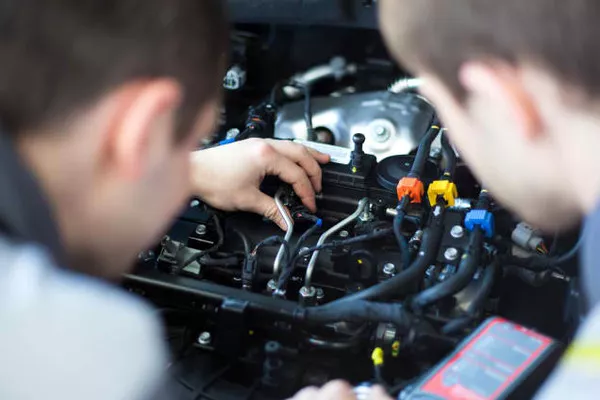
Take a friend with you and do the inspection
>>> Read more: How to do a used car check like a real dealer.
Step 2. Check under the hood
Open the hood and take in everything that you find inside the engine bay. Note how clean (or how dirty) the engine block is if there are wires that look frayed or chewed out, plastic pieces that look broken or out of place.
While you’re at it, you might want to see if the pertinent fluids (oil, coolant, windshield wiper fluid, brake fluid) are at adequate levels.
For newer cars
If the car is new or close to being new, then the engine bay typically smells like rubber with hints of oil, plastic, and gas. You may also catch a whiff of odors from the belts and hoses. Car owners usually describe the engine bay on a new car as having the odor of new tires.
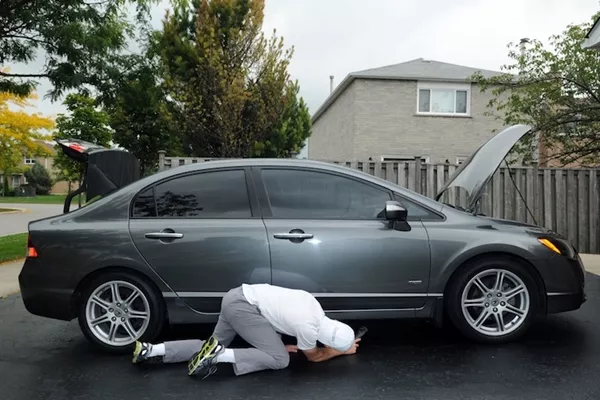
Car owners usually describe the engine bay on a new car as having the odor of new tires
For older cars
Older cars have the smell of oil and gas; however, the odor shouldn’t be too overpowering. If the smell is strong, then there could be a leak under the vehicle.
Also mind the fuel stored inside the tank, since the compounds in unused gasoline or diesel tend to evaporate over time, turning the fuel into a less combustible, varnish-like substance with a gummy consistency.
This can potentially clog the fuel lines, filter, and injectors.
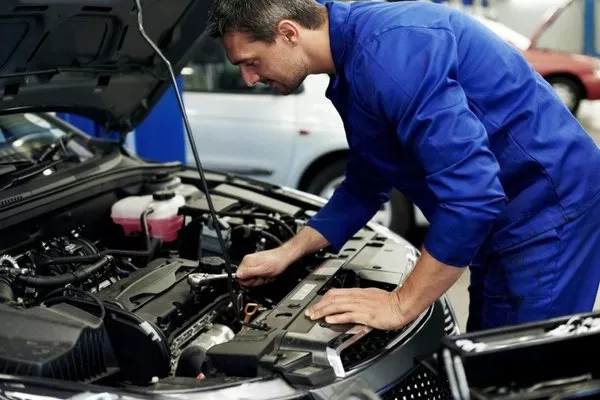
A visual inspection of the engine bay is important
>>> Also check: [Infographic] 7 FAQs when buying a used car in the Philippines.
Step 3. Look for puddles underneath the car
Part of inspecting a used car’s engine is getting down on all fours – to check for puddles underneath the car, that is.
A little water pooling on the ground from the car’s air-conditioning is normal, but some of the puddles have an oily consistency or have a petroleum smell, then it’s likely a leak that you wouldn’t want to ignore.
- Reddish-looking fluid might be leaking transmission oil.
- Black-colored fluid could be engine oil.
- Caramel or dark-brown fluid could be power steering or brake fluid.
- Green or orange fluid is likely to be coolant.
Dripping oil from under the vehicle could mean a number of things, from a damaged oil pan to worn out seals. If the seller has just arrived at the meet-up place, consider having small talk for a few minutes before looking under, to give dripping fluids ample time to stop after the engine has been switched off.
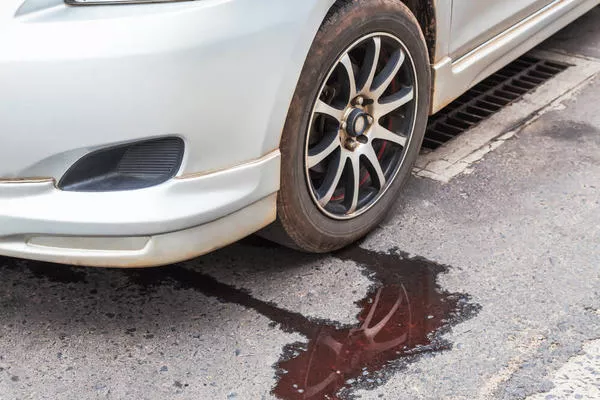
Puddles could mean leaks that can endanger your car's performance
Step 4. Inspect the car’s underside
Sellers clean the vehicle before showing it to the buyer, to make it more presentable. And many buyers tend to be swept away by how the car looks without bothering to discuss the car’s more technical side. Smart buyers are a little more meticulous in that regard, inspecting the car inside and out to their satisfaction.
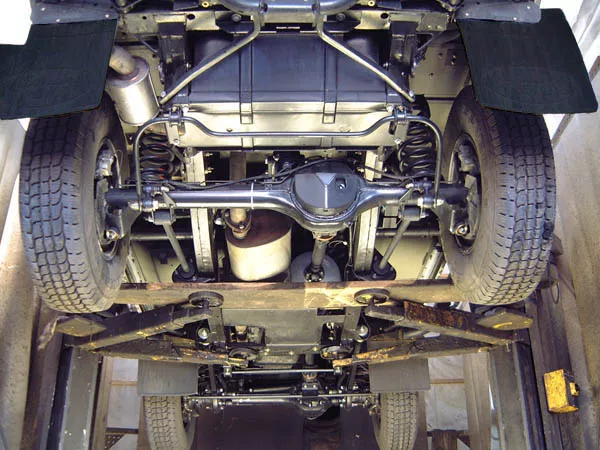
Smart buyers are a little more meticulous in that regard, inspecting the car inside and out to their satisfaction
Some of the things that you might want to take note are:
- Accumulated dirt and grime, which could eventually lead to corrosion
- Crusty clumps of muck along the under chassis, including dark-colored and wet chunks of oily sludge
- Beads of fluid forming on the underside
If you find anything suspicious, you can use a paper towel to take a sample and have a closer look.
>>> Worth reading: How to Negotiate When Buying a Used Car in the Philippines.
Step 5. Listen to how the engine runs
If you’re satisfied that the vehicle doesn’t have any unnecessary leaks, ask the seller to start the car, and listen to the sound of the engine in a variety of ways: at idle, with the accelerator pressed (while the car is in neutral), with the hood closed and open, with you standing outside the car and seated at the cabin.
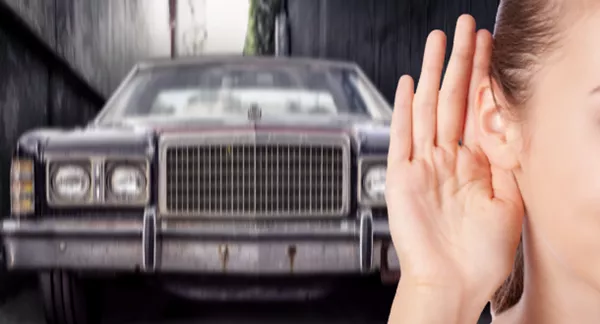
Listening to the engine runs can help you to know more about the used car
Does the engine sound labor during starting? Are there unnecessary jingling or squeaking sounds while the engine is running? Is the tailpipe giving off excessive emissions?
Anyone of these can point to a maintenance-related issue that the seller needs to address.
If at all possible, request for a test drive for you to dispel (or confirm) suspicions you might have about the condition of the car’s engine.
Recent posts
- Top 5 Best Used Cars Under PHP 250,000 on Philkotse Dec 28, 2022
- New cars vs. used cars or pre-owned cars: Which one to buy? Nov 30, 2022
- Which used cars are best for first-time Filipino buyers? Oct 19, 2020
- 6 Tips in Buying Used Cars in the Philippines Aug 28, 2018
- 6 questions to ask the seller before buying a used car Jan 23, 2018












